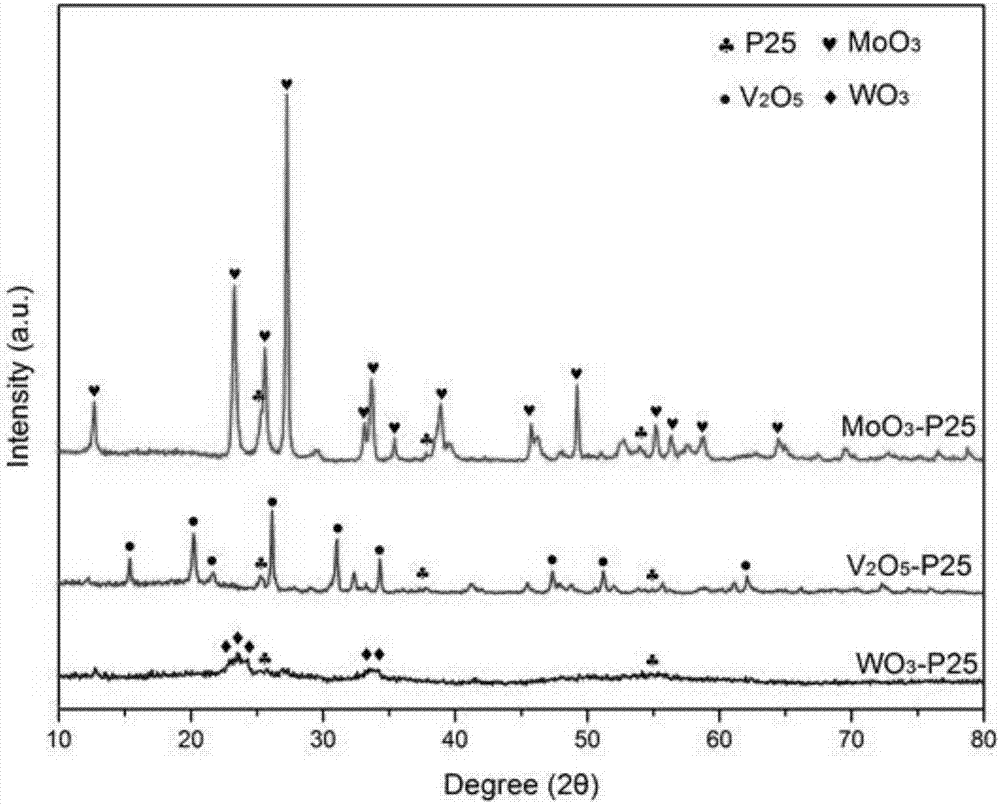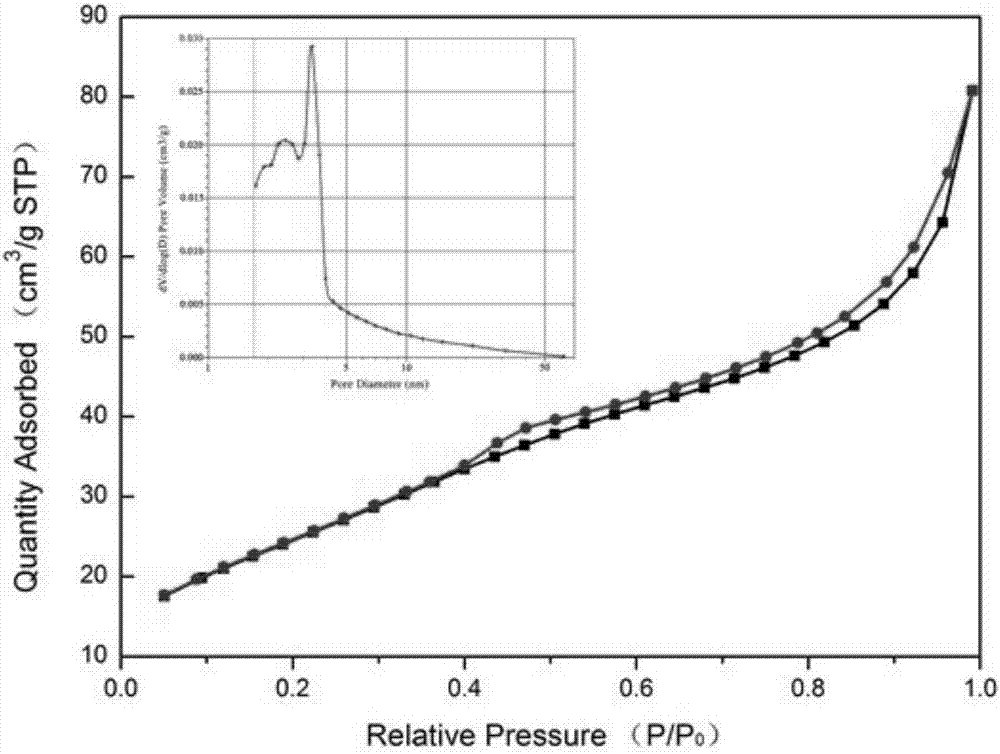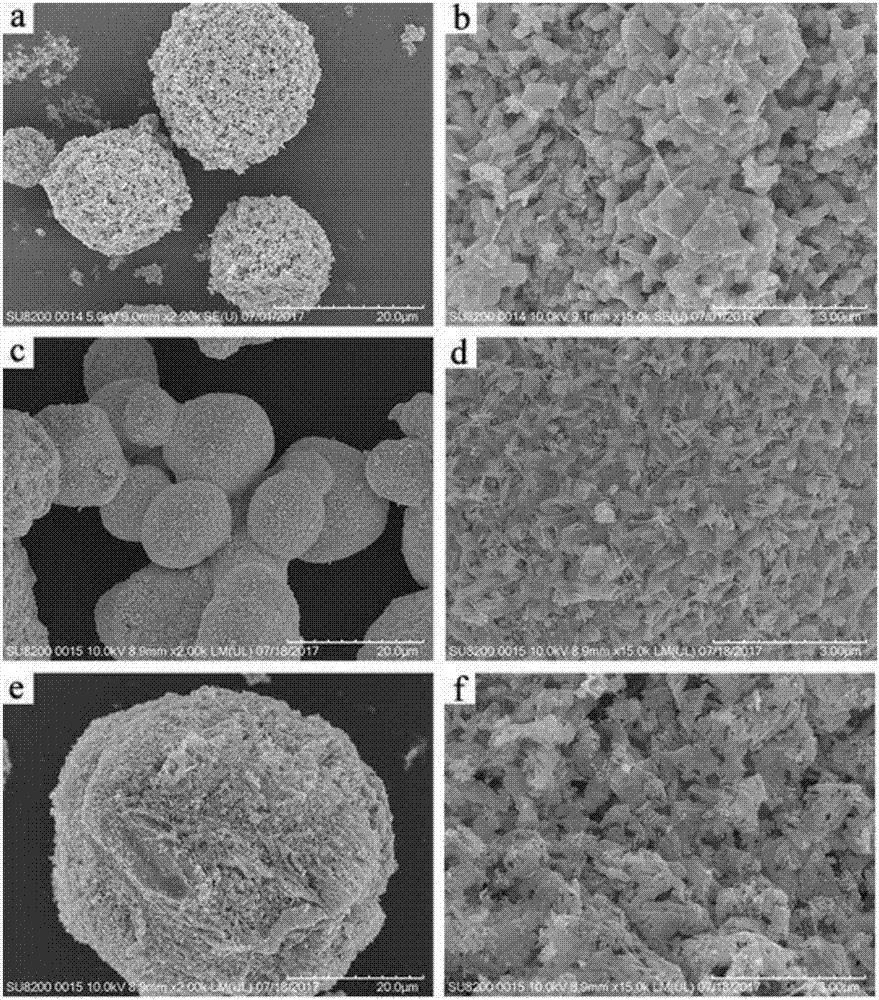Porous oxide/titanium dioxide microsphere composite catalytic material and preparation method thereof
A porous oxide, titanium dioxide technology, applied in metal/metal oxide/metal hydroxide catalysts, alkali metal oxides/hydroxides, chemical instruments and methods, etc. The problem of large forbidden band width can achieve the effect of improving light utilization rate, accelerating practical process and reducing agglomeration.
- Summary
- Abstract
- Description
- Claims
- Application Information
AI Technical Summary
Problems solved by technology
Method used
Image
Examples
Embodiment 1
[0032] Embodiment 1: ammonium molybdate and TiO 2 Mix and stir with the pre-configured solution (water+1wt.% polyvinyl alcohol (PVA)+1wt.% sodium dodecylbenzenesulfonate) at a ratio of 10:1 to obtain a uniform slurry, pour the slurry into the atomizer, and then evenly spray the slurry into liquid nitrogen (-196 ° C), the atomized slurry is instantly solidified in liquid nitrogen, and then the solidified powder is transferred to a freeze dryer, Dry at -50°C and 14Pa for 12 hours to sublimate the solid ice to obtain a porous powder. Put the dried powder into a muffle furnace, raise the temperature to 600°C at a rate of 15°C / min and keep it for 4 hours. The sintering process is carried out in an air atmosphere. After the sintering is completed, the sample is taken out with the furnace cooling to obtain MoO 3 -TiO 2 Microsphere composites.
Embodiment 2
[0033] Embodiment 2: ammonium metatungstate and TiO 2 Mix and stir with the pre-configured solution (water + 2wt.% polyvinyl alcohol (PVA) + 0.5wt.% sodium dodecylbenzene sulfonate) at a ratio of 8:1 to obtain a uniform slurry. Pour into an atomizer, and then spray the slurry evenly into liquid nitrogen (-196°C). The atomized slurry is instantly solidified in liquid nitrogen, and then the solidified powder is transferred to a freeze dryer. Dry at -30°C and 8Pa for 18 hours to sublimate the solid ice to obtain a porous powder. Put the dried powder into a muffle furnace, raise the temperature to 450°C at a rate of 10°C / min and keep it for 3 hours. The whole sintering process is carried out in the air atmosphere. After the sintering is completed, the sample is taken out with the furnace cooling, and the WO can be obtained. 3 -TiO 2 Microsphere composites.
Embodiment 3
[0034] Embodiment 3: ammonium metavanadate and TiO 2 Mix and stir with the pre-configured solution (water+3wt.% polyvinyl alcohol (PVA)+0.7wt.% sodium dodecylbenzene sulfonate) at a ratio of 5:1 to obtain a uniform slurry. Pour into an atomizer, and then spray the slurry evenly into liquid nitrogen (-196°C). The atomized slurry is instantly solidified in liquid nitrogen, and then the solidified powder is transferred to a freeze dryer. Dry at -10°C and 2Pa for 24 hours to sublimate the solid ice to obtain a porous powder. Put the dried powder into a muffle furnace, raise the temperature to 300°C at a rate of 2°C / min and keep it for 2 hours. The whole sintering process is carried out in an air atmosphere. After the sintering is completed, the sample is taken out with the furnace cooling, and V 2 o 5 -TiO 2 Microsphere Composite.
PUM
 Login to View More
Login to View More Abstract
Description
Claims
Application Information
 Login to View More
Login to View More - R&D
- Intellectual Property
- Life Sciences
- Materials
- Tech Scout
- Unparalleled Data Quality
- Higher Quality Content
- 60% Fewer Hallucinations
Browse by: Latest US Patents, China's latest patents, Technical Efficacy Thesaurus, Application Domain, Technology Topic, Popular Technical Reports.
© 2025 PatSnap. All rights reserved.Legal|Privacy policy|Modern Slavery Act Transparency Statement|Sitemap|About US| Contact US: help@patsnap.com



